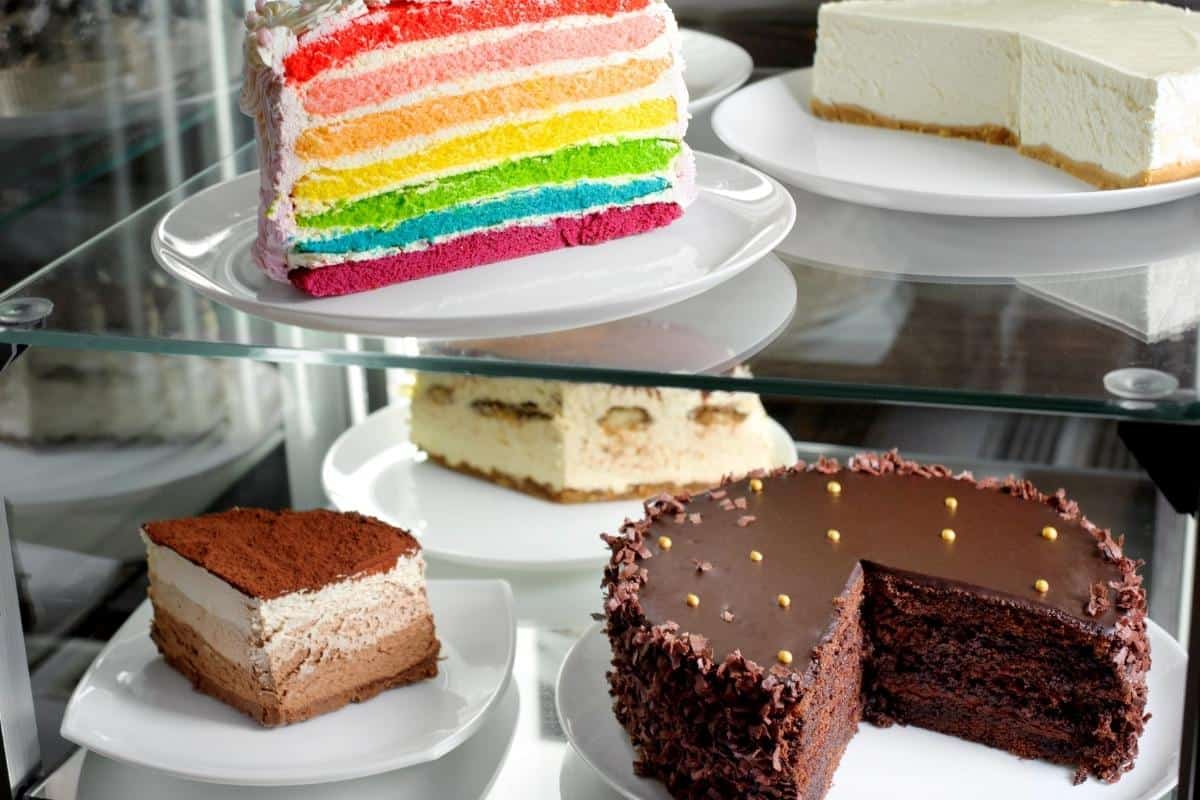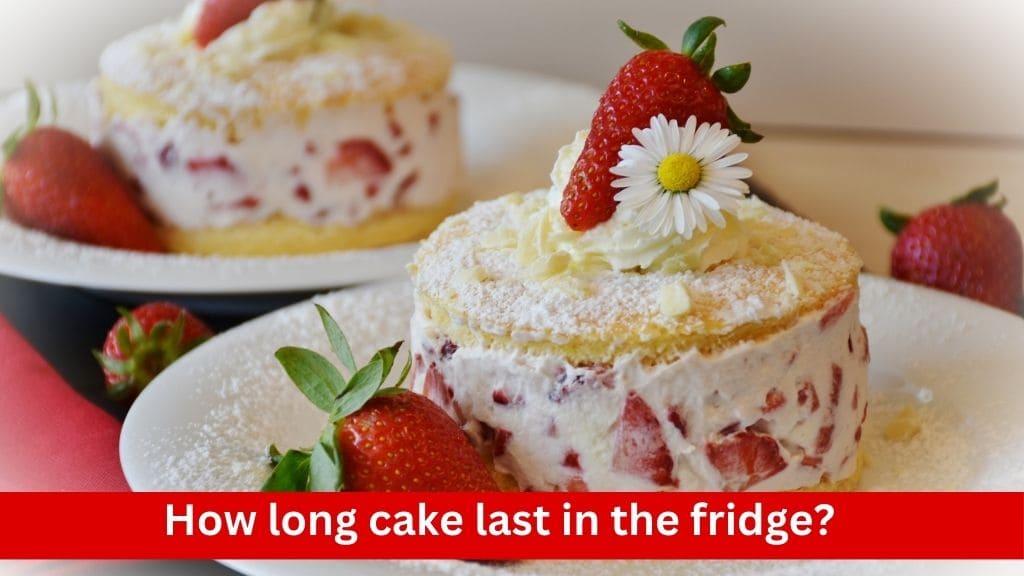Cake, the sweet symbol of celebration, is a treat loved by many. Whether it’s a decadent chocolate cake or a fruity sponge, cakes often make appearances at birthdays, weddings, and other joyous occasions. However, what happens when the festivities end, and there’s leftover cake? How long can you savor those delicious slices before they lose their freshness? This comprehensive guide will answer all your questions about how long cake lasts in the fridge.
![Order NY PATISSERIE 7TH AVENUE - New York, NY Menu Delivery [Menu & Prices] | New York - DoorDash](https://img.cdn4dd.com/cdn-cgi/image/fit=cover,width=600,height=400,format=auto,quality=80/https://doordash-static.s3.amazonaws.com/media/store/header/0ef58e05-44a5-4713-8438-6f2c54d3dc64.jpg)
Before delving into specifics, it’s essential to understand the factors affecting the shelf life of cake. Cake longevity depends on various factors, including its ingredients, storage conditions, and type. Generally, cakes made with perishable ingredients like dairy or fresh fruit have shorter lifespans than those without. Moreover, proper storage is crucial for maintaining freshness.
Factors Affecting Cake Longevity

Ingredients
- Perishable Ingredients: Cakes containing perishable items like fresh fruit, cream cheese, whipped cream, or dairy products tend to spoil faster due to their organic nature. These ingredients are more prone to microbial growth and spoilage compared to non-perishable ones.
- Preservatives: Store-bought cakes often contain preservatives to extend their shelf life. These additives inhibit microbial growth and delay spoilage, allowing commercially produced cakes to last longer than homemade ones without preservatives.
Storage Conditions
- Refrigeration: Proper refrigeration slows down the growth of bacteria and molds, helping to preserve the freshness of the cake. Cakes stored in the fridge are less susceptible to spoilage, especially those with perishable fillings or frostings.
- Room Temperature: Cakes stored at room temperature are exposed to ambient conditions that promote microbial growth. Factors like temperature fluctuations and humidity can accelerate spoilage, shortening the cake’s shelf life.
Type of Cake
- Cheesecake: Cheesecakes, particularly those made with cream cheese or cream cheese icing, have a shorter refrigerator lifespan due to the dairy content. Dairy products are highly perishable and can spoil quickly if not stored properly.
How Long Does Cake Last in the Fridge?

Duration
- Standard Cakes: Cakes without perishable fillings or frostings can typically last up to one week in the refrigerator if stored properly. The exact duration may vary depending on factors like ingredients and storage conditions.
- Cheesecake: Cheesecakes, especially those containing cream cheese or cream cheese icing, have a shorter refrigerator lifespan. It’s recommended to consume cheesecake within three to four days of refrigeration to maintain freshness and quality.
Storage Tips:
- Proper Wrapping: To prolong the shelf life of cake in the fridge, it’s essential to wrap it tightly to prevent moisture loss and exposure to air. Use plastic wrap or aluminum foil to cover the exposed portions of the cake, ensuring a snug fit.
- Airtight Container: Alternatively, storing the cake in an airtight container can also help maintain its freshness. Make sure the container is clean and dry before placing the cake inside, and seal it tightly to prevent air from entering.
Signs of Spoilage:
- Texture Changes: Spoiled cake may exhibit changes in texture, becoming dry, soggy, or crumbly. These alterations in texture can indicate that the cake is no longer fresh and should be discarded.
- Mold Growth: Mold growth, particularly on perishable components like fruit or cream, is a clear sign of spoilage. If you notice any signs of mold on the cake, it’s essential to discard it immediately to avoid consuming contaminated food.
Signs of Spoilage

Texture Changes:
- Dryness: Spoiled cake may become dry and crumbly, losing its moisture and becoming unpleasantly dry to the touch.
- Sogginess: On the other hand, some cakes may become overly moist or soggy due to excess moisture accumulation, leading to a mushy texture.
Mold Growth:
- Visible Mold: Mold growth is a clear indication of spoilage and potential microbial contamination. Mold may appear as fuzzy patches or spots on the surface of the cake, especially on perishable components like fruit or cream.
- Unusual Colors: Mold can manifest in various colors, including green, blue, white, or black. Any discoloration on the cake, particularly if it appears fuzzy or mold-like, should be considered a sign of spoilage.
Off Odors:
- Foul Smells: Spoiled cake may emit unpleasant or off-putting odors, indicating the presence of harmful bacteria or microbial activity.
- Sour or Rancid Odors: Some spoiled cakes may develop sour or rancid odors, reminiscent of spoiled dairy or fats, signaling advanced deterioration.
Other Indicators:
- Taste Test: While not always recommended, tasting a small portion of the cake can help determine if it has spoiled. However, exercise caution, as consuming spoiled food can lead to foodborne illness.
- Physical Changes: Inspect the cake for any other physical changes, such as unusual growths, sliminess, or separation of layers, which may indicate spoilage.
Should Cake Be Refrigerated?

Perishable Ingredients:
- Fresh Fruit: Cakes containing fresh fruit or fruit fillings are prone to spoilage due to their high water content. Refrigeration helps slow down the growth of bacteria and molds, extending the freshness of the fruit and preventing spoilage.
- Dairy Products: Cakes with dairy-based fillings or frostings, such as cream cheese, whipped cream, or mascarpone, should be refrigerated to prevent bacterial growth and maintain food safety. Dairy products are highly perishable and can spoil quickly at room temperature.
Room Temperature Storage:
- Non-Perishable Cakes: Cakes without perishable fillings or frostings, such as plain sponge cakes or those with preserved fruit, can often be stored at room temperature for short periods. However, prolonged exposure to room temperature increases the risk of microbial growth and spoilage, particularly in warm or humid environments.
Immediate Refrigeration:
- Precautionary Measure: When in doubt, it’s advisable to refrigerate cake immediately after serving, especially if it contains perishable ingredients like fresh fruit or dairy. Refrigeration slows down the growth of bacteria and molds, helping to preserve the cake’s freshness and prevent spoilage.
- Food Safety: Refrigerating cake reduces the risk of foodborne illness associated with consuming contaminated or spoiled food. Proper refrigeration maintains the cake’s quality and safety, ensuring it remains enjoyable and safe to eat.
Duration of Storage:
- Short-Term vs. Long-Term: For short-term storage of leftover cake, refrigeration is recommended to maintain freshness and prevent spoilage. However, if you plan to consume the cake within a day or two, room temperature storage may be acceptable, provided the environment is cool and dry.
- Extended Storage: If you anticipate storing the cake for an extended period, refrigeration is essential to preserve its quality and safety. Properly refrigerated cake can last longer without significant deterioration, allowing you to enjoy it over several days or even weeks.
How to Store Leftover Cake

Proper storage is key to extending the shelf life of leftover cake. Follow these steps to ensure your cake stays fresh:
1. Wrapping:
- Use Plastic Wrap or Foil: Wrap the exposed portions of the cake tightly with plastic wrap or aluminum foil to create a barrier against air and moisture. This helps prevent the cake from drying out and preserves its moisture content.
- Cover Completely: Ensure that the entire surface of the cake is covered with the wrap or foil to prevent any part from being exposed to air, which can lead to drying or staleness.
2. Airtight Container:
- Choose a Suitable Container: Alternatively, store the leftover cake in an airtight container. Select a container that is just large enough to accommodate the cake without leaving excess space, as air pockets can accelerate staleness.
- Seal Tightly: Seal the container securely to prevent air from entering. This helps maintain the cake’s moisture level and prevents it from absorbing odors from other foods in the fridge.
3. Refrigeration:
- Place in the Fridge: Refrigerate the wrapped or containerized cake promptly after serving. The cool temperature of the refrigerator slows down the growth of bacteria and molds, extending the cake’s shelf life.
- Positioning: Place the cake on a flat surface or shelf in the refrigerator to prevent it from shifting or becoming misshapen. Avoid placing heavy items on top of the cake, as this can compress and damage it.
4. Prevent Drying Out:
- Plastic Wrap Technique: If using plastic wrap, press it directly against the cut surfaces of the cake to create a tight seal and prevent moisture loss. This helps preserve the cake’s softness and prevents it from drying out.
- Moisture Retention: Storing the cake in an airtight container also helps retain moisture and prevents drying. The sealed environment minimizes exposure to dry air, maintaining the cake’s freshness for longer.
5. Labeling and Dating:
- Label Container: If storing the cake in a container, label it with the date of storage to keep track of its freshness. This allows you to monitor how long the cake has been in the fridge and determine its remaining shelf life.
- First In, First Out (FIFO): Practice FIFO principles by consuming older leftover cake before newer ones. This ensures that you use the oldest cake first, reducing the risk of food waste.
Conclusion
The shelf life of cake in the fridge varies depending on factors like ingredients, storage conditions, and type. While standard cakes can last up to a week with proper refrigeration, cheesecakes and those with perishable fillings require more immediate consumption. By understanding these factors and following proper storage practices, you can ensure your leftover cake stays fresh and delicious for as long as possible. So, go ahead, indulge in that celebratory slice, knowing you’ve got the knowledge to make the most of your cake leftovers.

